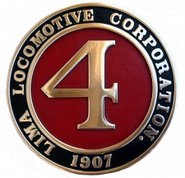 |
The two-hour training session laid the groundwork for more intense formal training to begin soon. Each volunteer employee received a binder with three important railroad documents.
Cory briefed volunteers on the museum volunteer handbook. "You are part of about 95 museum volunteers," said Cory. Volunteers donate their free time to the railroad, including some that give "almost full time hours."
The handbook gives the volunteer an overview of each function within the operation of the El Dorado County Historical Museum. The El Dorado Western Railroad falls under the museum. It's the museums major living history program.
 Shutlze's presentation of the railroad track worker safety plan followed. "Whether you're a volunteer or paid staff, it all comes out the same," said Shultze. Volunteers bring "lots of energy and drive" to the railroad.
Shutlze's presentation of the railroad track worker safety plan followed. "Whether you're a volunteer or paid staff, it all comes out the same," said Shultze. Volunteers bring "lots of energy and drive" to the railroad.
As a professional track inspector, he emphasised the need for all railway workers to learn how to safety work in an environment with heavy moving equipment.
The GCOR lays the foundation for railroad operations in the United States, said Schultz. As a retired Southern Pacific/Union Pacific train conductor, he used the GCOR daily. EDWR's GCOR is patterned after the one used by the Union Pacific and the Burlington Northern Santa Fe railroads.
All raiload volunteer will become familiar with the GCOR, including shop and office workers. "Most of the same safety rules apply to everyone on the property," explained Schultz.
Fowlar closed the session with an overview of the locomotive engineer training program. As a retired Southern Pacific/Union Pacific locomotive engineer, Fowlar will direct the program for selected volunteers.
Trains of the El Dorado Western Railroad run every Sunday through December. The timetable calls for 1st, 3rd & 5th Sundays from El Dorado Station. We run from Shingle Springs Freight Shed on the 2nd & 4th Sundays each month. Updates to the timetable are posted on our Facebook page each Thursday and Friday.
Suggested donation is $5 for adults (age 8 and up); $3 for ages 3 to 7; and 2 and under ride free. Donations help keep the living history program of the El Dorado County Historical Railroad Park and EDWR alive.











